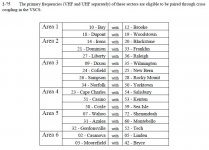autovon
Ø
- Joined
- Jul 10, 2008
- Messages
- 473
Thanks for the reply. I should have explained better, hopefully this makes sense. Frequencies used here are just examples.Yes, in our NAS, this is for sure. Multicasting is about the best way to describe it.
Let's say I'm on 120.050 talking to a controller at FL320 over South Dakota. Somewhere out there is aircraft B on 135.25. The controller tells aircraft B to contact them on 120.050. I hear aircraft B readback they are switching to 120.050, even though I'm not tuned to that frequency. Then, I hear aircraft B check in on 120.050.
The audio sound for the controller sounds the same throughout this example. For aircraft B, when they are on the other frequency (135.25), the audio sounds tinny and there is about a half second hang time (like a repeater) on their transmission. When they check in on 120.050, it sounds normal. The sound signature and being able to hear other airplanes not on my frequency sounds exactly like the cross coupling, bandboxing (whatever its called) that is used in NAV CANADA, Europe, and elsewhere.
I've heard this a handful of times in the US, for sure on at least one of Minneapolis Center's frequency. The audio signature heard in the above example is not just that one airplane. As other planes check in on the 'other' frequency, they all sound tinny and have a very brief hang time when they unkey.


